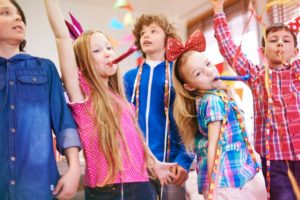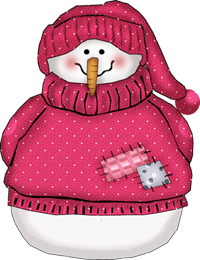teacher
Kolpakova Appolinaria Ivanovna
teacher
MBOU DOD "Children and Youth Center"
d. Severodvinsk
We take beauty and purity from the ancients,
Sagas, stories from the past,
Because goodness remains good.
Past, future and present.
V. Vysotsky
The program "Feast in my house" has an artistic and aesthetic orientation, helps to integrate the personality of the child into the national culture, corresponds to the cultural and national characteristics of the Russian North. The program was tested for 2 years. As a result of the diagnosis, it was corrected and improved.
Folk art of the Russian North is rich in variety of forms, has inexhaustible artistic and creative potential and is an inexhaustible source of development of the artistic culture of the people. Folk art is a fusion of human reason, warmth of soul, wise imagination. It deeply affects the world of the child.
The program is relevant, since memory is a bridge connecting today with yesterday, the present with the past. Folk art is a great force that connects the past, present and future. Everything that our ancestors left us: folk songs, epics, fairy tales, Russian huts with beautiful examples of decorative and applied arts should remain in our memory.
The preservation of historical and national roots depends on children learning to understand and appreciate the spiritual and moral traditions inherited from previous generations. How many of our ancestors have inherited from us! But to find this wealth, to understand the science of goodness, to experience the joy of meeting with the beautiful, you need to have a sensitive soul and a responsive heart.
Folk art is a figurative reflection of reality, the language of symbolic images. Before, understandable to each person, it was a kind of language of communication between people and served as a textbook of life.
The pedagogical expediency of the program is that thanks to it, children are introduced to the origins of Russian folk culture through acquaintance with folk customs, holidays, traditions, some types of decorative and applied arts, skills of practical activity of students are formed.
The novelty of the program “Feast in my house” is reflected in the combination of students’ solid knowledge about the history of the soy homeland, customs and traditions of the peoples of the Russian North with practical skills in those types of decorative and applied creativity, which receives a gradual revival through the connection of traditions and symbolic images used in northern painting.
PurposeIntroducing children to the origins of Russian northern folk culture, its heritage, the formation of a sense of love and goodness, the education of patriotism.
Challenges
- To acquaint students with the history of the northern national culture, ritual holidays, their traditions and customs; to form in children emotional responsiveness and interest in folk creativity. To cultivate an interest in the historical past of their homeland.
- Acquaint with the mysterious language of symbolic images of folk decorative art.
- To expand the idea of the variety of objects of folk decorative and applied art; to teach to allocate the main means of expressiveness of products of various folk crafts (Khokhlom, Gorodetsk, Polkhovo-Maidan, Gzhel ceramics, Vologda lace, Filimonov and Mikkov toys); to teach to see the relationship between real reality and folk art.
- To educate the desire to engage in decorative and applied activities; to master the characteristic elements, color, composition of this craft; to be able to apply the knowledge gained in their own creativity; to improve skills and skills in drawing.
- To form aesthetic taste; to promote the development of fine creativity, curiosity, imagination.
In the course of classes, children get acquainted with samples of folk art,
We learn to see and love art in its diversity. The program is addressed to students 7-10 years old. The duration of the program is 2 years.
When training under this educational program, various forms of organization of classes are used: collective, frontal, group, individual. Mode of classes - 2 times a month for 2 hours. Classes are held with the whole class, in subgroups.
Summing up is carried out in the form of self-assessment of students after each lesson, final classes at the end of the six months, analysis of the results of children's participation in competitions and exhibitions. Based on the results of training, a diagnostic study is carried out to identify the level of knowledge, skills and skills obtained. It is carried out in the form of questionnaires, testing.
Thematic planning of classes is based on the national calendar, is associated with traditional northern folk culture. Folk holidays determine the subject of classes and the time of holding. At the end of each lesson, an exhibition of children's works is held, the best of them are presented at exhibitions of different levels, serve for interior decoration.
The program is compiled in accordance with the approximate requirements for programs of additional education of children on the basis of the appendix to the letter of the Department of Youth Policy, Education and Social Support of Children of the Ministry of Education and Science of Russia dated 11.12.2006 No. 06-1844.
Unlike the typical programs: "Hand weaving" (the program for out-of-school institutions and educational schools "Culture of Life", 1996), Methodical manual "Drawing classes with children 6-7 years old" T.V. Korolyov, M.2009, Creative mi) program "Holiday in your home" is distinguished by a combination of various types of activities. Students receive theoretical knowledge and practical skills in working with paints, beads, salt dough, paper, fabric.
The total annual load of the program is:
1, 2 years of study - 36 hours, 1 time in 2 weeks.
Methodical support of the program: development of games, conversations, didactic materials for classes, technological maps of practical work, visual aids, video and audio materials.
Educational and thematic plan
Year of study
Everyone's nice on their side.
|
№ |
topic |
Number of hours |
| 1 | Everyone has a nice side. | 2 |
| 2 | Travel on the map of the Arkhangelsk region | 2 |
| 3 | The Pearl of the North - Solovki Northern Pearls | 2 |
| 4 | The Tree of Life | 2 |
| 5 | Pomeranian | 2 |
| 6 | Christmas Tradition in the Russian North | 2 |
| 7 | The history of New Year's toys | 2 |
| 8 | Christmas tree present | 2 |
| 9 | Christmas carols | 2 |
| 10. | Visiting the wizard. | 2 |
| 11. | North-Edge Bylin and Songs | 2 |
| 12. | Acquaintance with the traditions of Maslenitsa | 2 |
| 13 | Annunciation | 2 |
| 14. | Palm Sunday | 2 |
| 15. | Expensive testicle for Christ day | 2 |
| 16 | Easter carousel | 2 |
| 17. | Trinity. | 2 |
| 18. | The final lesson "Fairy-tale covenants" | 2 |
| 36. |
second year
|
№ |
topic |
Number of hours |
| 1 | "Excitement" | 2 |
| 2 | Trofimov's gatherings | 2 |
| 3 | The veil is over. | 2 |
| 4 | Fecla squash | 2 |
| 5 | Mystery, maiden birds. | 2 |
| 6 | Under the wing of Archangel Michael | 2 |
| 7 | Pearlbird | 2 |
| 8 | Nikolsk fair. | 2 |
| 9 | Sunshine | 2 |
| 10. | Winter Christmases | 2 |
| 11. | Emelina weekly | 2 |
| 12. | Shrovet | 2 |
| 13 | Forgiveness Sunday | 2 |
| 14. | Eudokia | 2 |
| 15. | Daria - a fraudulent day | 2 |
| 16 | Easter | 2 |
| 17. | egor | 2 |
| 18. | Fun fair | 2 |
| 36. |
Download the full text of the program with additions of 40 Kb
{module Yandex|none}





